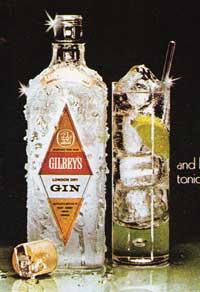About advertising language, subliminal advertising
What is advertising? It is a set of communication techniques. And through it, the issuer (the advertising agency) sends a message to the recipient (the user consumer) to go through the way prescribed by the issuer. It is therefore a matter of driving the recipient into action.

Of course, this communication is interesting, since the goal is to sell products or ideas. Advertising wants to create and maintain the needs (that is why we will see many times words as “essential”, “mandatory”, “essential”, “necessary”, ..). Also, in developed societies things are going to fade away and quickly annul (this, of course, is called fashion), and that is also something planned. The use of production to meet the needs in undeveloped societies makes advertising lose its importance.
Advertising is very important and we cannot imagine a society without advertising. We receive advertising messages constantly and omnipresent, mainly through mass media: radio, cinema, television, roads, graffiti, shop windows, magazines and newspapers, ...
Many filmmakers also negotiate advertising before the film. That's why when actors use a car, perfume or clothing, they're advertising that brand that's also paid for. In addition, this advertising has more influence than we think. For example, the invention of the company that financed Popeye's cartoons was to relate to the force of spinach.
Humanity and the language of advertising
The publicist will decide first who he wants to reach and based on it, where, at what time, he will make public his announcement (it would not make sense that Carmen Sevilla offered Mercedesas or macroeconomics books).
Psychology and anthropology (human sciences) help advertising a lot. And the language of advertising (everything was done with words, images and sounds) is calculated and arranged. Here are some features of this language:
- Advertising often works through the controller. It does not mean things, but command. (Mrs. Adelaide, in the announcement of the heads Therapy Pillow, tells us “Do not wait tomorrow, if you are going to buy it, you are going to buy it...!”). And keep in mind that the person watching the ad is relaxed, watching TV or reading something.
- In many other occasions it has an informative aspect (think of the “microspaces” of television and radio, usually through interviews and those raised against “zapping”). The biggest lies (drugs and deceptive products,...) are apparently informative (slimming products, for example). It is a mixture of information and advertising. In addition, advertising that is done while there is content is illegal (for example, football on Basque television, which requires a bumper or a black).
- Advertising language has great aesthetic value and word or language games are very numerous (Alliterations: “Solares only knows water”, “By bus you see where you go”,... Onomatopeyas: “Chup, chup, Avecrem”, “Pim, Pam, Fogo”, “Ñaca, ñaca, la Cigala”, “TÓnica... You. you know”, “Klinc, klanc, kas”,... Rhymes: Hyperboles: “Anglo, better than reality”, “1880, the most expensive nougat in the world”,...).
- It often uses dogmatic language: verification that is considered or established as a basic truth, which cannot be discussed or questioned: “A little Magno is Much”, “Sovereign is a man’s thing”, “For taste, smoke less and better”, “Silhouette: eating healthy is smart”,...

I wish false. They know that human beings have desires, desires, that we are not happy with what we are or what we have. Advertising uses that slice, and when we buy a specific brand, we also buy the image that advertising has achieved with that brand (in cars, for example, when buying Mercedesa, we also buy the image of the “winner” that carries with it).
To do this, advertising will attempt to create the product myth (or lack of publicity in the case of Rolls Royce) and tempt the greedy heart of the recipient/consumer with arguments of one type or another. In the showy of good we will often see things that have nothing to do with it, which explain the values to satisfy our desires:
- Need friends? “Cola Cao, his faithful friend”, “You and Sovereign, intimate”, “A whole friend, Carlos III”… In the same way are the announcements of the happy family, Nescafé, etc.
- Want to escape from monotony? “Hilo musical, otra forma de vivir”, “This summer your life can have another different air, it matters Garza”, “Coca-cola, the spark of life”,... In this sense, in the tobacco ads we are presented mentoring excursions: Winston, Marlboro, Camel,...
- If in life you have to become “something”, for it will appear a “winner” on the product: In the ads of the company Nike appear the stars of the sport. Or “100 Pipers, it’s another level.” They also sell us the value of “famine”: “the most expensive nougat in the world”, ...
- Satisfaction of virility/femininity (beauty). (“In Spain every man a Sovereign”, “Magno: it’s time to celebrate the international year of man”, “Kas, the taste that falls in love”, … This resource is also frequently used in perfume advertisements, and this type of ads are usually accompanied by an accused masculinity.
- Satisfaction of nationalism. “For us Gurea”, “Caja Laboral”, “Euskal Piel, nuestra propio”, “Aguila Imperial, cerveza de España”, ...The Municipal Savings Bank of San Sebastian was also characterized by a four-headed set of images.
- Meeting people's environmental trend: “This is natural, honey from the San Francisco Farm”, “Oranges have no bourgeois, Trinaranjus either”,...

“Benneton” has managed to turn advertising into news. As so much is said about it, is there better and cheaper advertising?
The “People Are Not Naive” argument is often used, but when things look objectively, we get a smile. Especially in advertisements that include “dreaming values” (perfumes,...).
Subliminal advertising
Advertising can be very varied: it is comparatively illegal in Spain, but in the US, for example, the ads between “Coca-cola/Pepsi” are the best known examples. This time we will talk about advertising with subliminal messages.
What is subliminal advertising? It is to receive a stimulus (usually related to sex), but by its low intensity, by its lack of attention, by its short duration,... we are not aware of the message we have received, although through the unconscious it could change our behavior. It cannot be said that their influence is fully demonstrated, but creators often behave with it.
The goal of subliminal advertising is exclusive to advertising itself. But you want to increase the influence of advertising. Keep in mind that what they put before us (usually sex), we will “get” it by buying the product. And also, the subliminal message does not consciously pretend to evoke or know it.

First experience in subliminal advertising in the United States. Lee was held in New Yersey. James Vicary did it. Through the tachyscope messages were inserted into a film (1/3,000 per second) every 5 seconds. Because these messages were short in length, people did not consciously assimilate them, but the influence was clear. This message was interspersed for six weeks throughout the film “Picnic”: “Are you hungry? Eat popcorn and drink Coca-cola.” Popcorn consumption increased by 57.7% and Cola consumption by 18.1%.
Another more advanced and effective method was to introduce advertising messages about the film below the clarity of consciousness. Through a machine created by Stimutech, you can connect your computer to TV with subliminal messages such as buying cassettes to “quit smoking”, “lose weight”, “relax”, “improve reading speed”, “overcome the rascas”, etc. Sects also often use subliminal messages.
Subliminal stimuli can be seen in films such as “Prophecy.” Wilson Bryan Key made in 1976 an analysis of the horror film “The Exorcist”. He says that subliminal techniques were used to increase their emotional effects. They mixed the noise of a group of indignant bees, recorded in a slaughter of pig, lions or cats, noises of the night forest,... Among the foyers of vision you can see, among others, a disguise of death. “Basic Instinct” also conceals two ways of announcing the whisky “Jack Daniels”.
Sexual issues serve to sell any product and seem to increase sales. The tendency of advertising to sexualize the most amazing things is evident. Also, in some magazines and newspapers the term “sex” has been recorded blurred to make it attractive to the buyer.
It is not so easy to understand the relationship between alcoholic beverages and subliminal manifestations of death (disguises, spectrum, ghosts, cut heads and organs, etc. ). The words “death” and “sex” are the most common in such ads.
But why and how do sales grow when ads include symbols of death? It does not seem that alcoholics seek to destroy themselves. Another explanation would be, therefore, that alcoholics show their contempt for death when they drink (we can remember our curiosity about death, and when they drink, the alcoholic becomes a hero, after all).

Tobacco ads have also found messages that drive homosexuality, sadism, brutality, masochism...
The first example (the Cutty Sark whiskey ad) has an obvious meaning: immerse yourself in the festive atmosphere by drinking Cutty Sark. But let us think for a moment about the second meaning that the announcement can have: through musical instruments, saxos and drums, sexual organs are expressed. And on the drums you can read the words “SEX” (sexy, perhaps) and “DIRE sex”. These must also be joined with the invitation of “Enrólate”. Dire has the two meanings of “terror” or “terrible” in Basque: “Terrible sex”, “scary”,... on the one hand and “secular sex”, “ideal”, “surprising” on the other. So, as the announcement says, Cutty Sark whisky immerses you in a festive atmosphere, but above all in “incredible sex”. And if instead of reading “dire sex” you read “dirt sex”, the meaning would be “the sex of dirt”.
In the words and images of Baileys announcements the theme of sexuality is evident: the spill enters the cup, the two trees (united) form a single tree,... But you can also see the shadow of a rabbit that has nothing to do with the elements of the ad. Remember that the rabbit can be the symbol of sexual desire, softness, Play Boy... In the last announcement there are many hidden things, but perhaps the clearest thing is that “SEX” of the glass ice.
When a person finds subliminal words or drawings in an ad, and after showing them to his own, subliminal messages lose their influence, as they will henceforth not be forgotten.
We are increasingly used to seeing advertising, and this seems to strengthen our defense system, but we have to be able to interpret, decipher and be critical.





